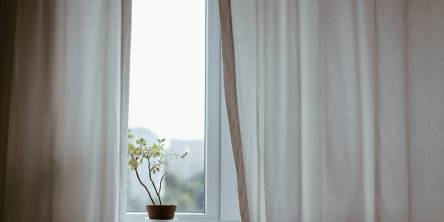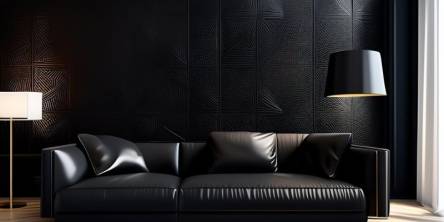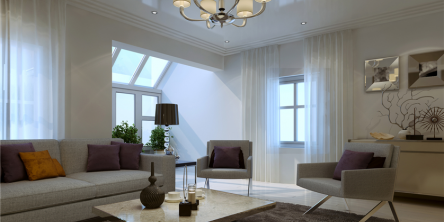Top Embroidery Techniques for Elegant Curtain Designs

Curtains are an essential aspect of interior decor, adding warmth, sophistication, and style to any space. Among the numerous ways to enhance curtain aesthetics, embroidery stands out as a timeless and elegant option. Embroidered curtains elevate the decor with intricate patterns, delicate motifs, and artistic craftsmanship. This article explores the top embroidery techniques used to create stunning curtain designs, ensuring a blend of tradition, innovation, and luxury.
Hand Embroidery Techniques
1. Crewel Embroidery
Crewel embroidery is a decorative technique that utilizes wool threads to create detailed and raised patterns. It can be beautifully combined with machine embroidery designs to enhance intricate detailing and add a modern touch to traditional styles. Originating from the Kashmir region, this style is often used to depict floral and nature-inspired designs on curtain fabrics like linen, cotton, and velvet. The thick texture of crewel embroidery adds a three-dimensional effect, making curtains look rich and opulent.
2. Needlepoint Embroidery
Needlepoint embroidery involves stitching patterns onto a stiff canvas or fabric, creating durable and visually appealing curtain embellishments. This method allows for elaborate geometric designs, floral arrangements, and artistic motifs. Needlepoint is ideal for enhancing living room and bedroom curtains, offering a classical and structured look.
3. Cross-Stitch Embroidery
Cross-stitch is a versatile embroidery technique that forms X-shaped stitches to create intricate patterns. It is particularly popular for designing traditional and vintage-inspired curtains. Cross-stitch embroidery can incorporate multi-colored threads to depict landscapes, floral arrangements, and symmetrical patterns, adding an artisanal touch to curtain designs.
Read more: Blinds vs Curtains: Who Wins?
Machine Embroidery Techniques
4. Satin Stitch Embroidery
Satin stitch embroidery is commonly used in machine embroidery to create smooth, glossy, and refined patterns on curtain fabrics. This technique is ideal for monograms, delicate floral designs, and abstract motifs. The even and polished appearance of satin stitch embroidery enhances the elegance of silk, organza, and satin curtains.
5. Appliqué Embroidery
Appliqué embroidery involves sewing fabric pieces onto a curtain base fabric to create contrasting patterns and textures. This technique is often used in contemporary and modern curtain designs to introduce bold color contrasts and eye-catching motifs. Machine appliqué ensures precision, making it suitable for complex and artistic curtain embellishments.
6. Free-Motion Embroidery
Free-motion embroidery allows for creative and unrestricted stitching, where the machine needle moves freely to create detailed and flowing designs. This technique is often used to achieve artistic, sketch-like embroidery on curtains. It works well for custom and abstract designs, making each embroidered curtain unique and one-of-a-kind.
Traditional and Cultural Embroidery Styles
7. Chikankari Embroidery
Chikankari is a delicate and intricate embroidery style from India, known for its white-on-white floral and paisley patterns. Traditionally done on light fabrics like cotton and muslin, this embroidery technique gives curtains a soft, airy, and sophisticated appeal. Chikankari is ideal for sheer and semi-sheer curtains, enhancing natural light while adding a touch of elegance.
8. Kantha Embroidery
Kantha embroidery is a folk embroidery technique from Bengal, characterized by running stitches that create textured and quilted effects. This method is often used for bohemian and rustic curtain designs, incorporating vibrant colors and storytelling motifs. Kantha embroidery adds a handcrafted charm to linen and cotton curtains, making them perfect for casual and artistic spaces.
9. Suzani Embroidery
Suzani embroidery, originating from Central Asia, is known for its elaborate floral and vine patterns stitched with silk threads. This technique is widely used to create luxurious and exotic curtain designs. The bold and colorful motifs of Suzani embroidery enhance traditional, eclectic, and oriental-themed interiors, making curtains a focal point in the decor.
Embroidery on Different Curtain Fabrics
10. Embroidery on Sheer Fabrics
Sheer fabrics like organza, chiffon, and voile require delicate embroidery techniques such as shadow work, French knots, and light thread work. These techniques ensure that the embroidery enhances the fabric's transparency without overpowering it. Sheer embroidered curtains provide an ethereal and romantic ambiance, ideal for bedrooms and formal living spaces.
11. Embroidery on Heavy Fabrics
For thicker fabrics like velvet, brocade, and jacquard, embroidery techniques such as crewel, chain stitch, and appliqué work best. These methods create bold and pronounced designs, adding depth and texture to the curtains. Embroidered heavy fabric curtains work well for grand settings, such as dining rooms, home theaters, and traditional interiors.
12. Lace Embroidery
Lace embroidery involves creating or embellishing lace patterns on curtain fabrics, offering a classic and vintage appeal. Techniques such as needle lace, bobbin lace, and tatting can be used to design intricate lace-embroidered curtains. These curtains complement Victorian, French country, and shabby chic interiors, adding a touch of refinement and grace.
Custom and Contemporary Embroidery Trends
13. Monogrammed Embroidery
Personalized monogram embroidery is a growing trend in curtain design, adding a bespoke and luxurious element to home decor. Monograms can be embroidered using satin stitches, chain stitches, or even beaded embroidery for a sophisticated look. This trend is particularly popular in hotel suites, formal dining areas, and personalized interior spaces.
14. Metallic Thread Embroidery
Metallic thread embroidery incorporates gold, silver, or copper threads to add a glamorous touch to curtain designs. Techniques such as couching and Zari work are often used to achieve regal and luminous effects. Metallic embroidered curtains enhance the opulence of contemporary, Art Deco, and luxurious interiors.
15. 3D Embroidery
Three-dimensional embroidery uses layered stitches, padded embroidery, and beadwork to create raised and textured patterns. This technique is perfect for adding depth and artistic flair to curtains. 3D embroidered curtains serve as statement pieces in modern and avant-garde interior designs, blending artistry with home decor.
Conclusion
Embroidery techniques bring a world of creativity and craftsmanship to curtain design. From traditional hand embroidery styles like Crewel and Chikankari to modern machine embroidery techniques such as satin stitch and free-motion embroidery, each method offers a unique charm. Whether opting for intricate lacework, bold Suzani patterns, or personalized monograms, embroidered curtains can transform any space into an elegant and inviting setting. By choosing the right embroidery technique and fabric, homeowners and interior designers can achieve a perfect balance of sophistication, artistry, and functionality in their curtain designs.
Similar Articles
Your living room is the heart of your home—a space for relaxation, entertainment, and family gatherings. One of the easiest ways to transform its look and feel is by choosing the right curtains.
Learn why a sofa bed is a must-have for first-time homeowners. Save space, host guests, and adapt to changing needs with this stylish, functional investment.
Getting a good night’s sleep isn’t just about having a comfy bed – the entire bedroom plays a role in promoting rest and relaxation
Looking for a bold way to elevate your home or office? Black wallpaper is a game-changer.
Making the decision to remodel a bathroom can be an exciting endeavor. However, oftentimes, people fail to realize just how challenging it can be.
Want stylish lighting? Find the perfect neon signs for room decor and turn your home into a vibrant, stylish haven with glowing accents. Get inspired today!
Ready to enhance your decor with a neon retro sign? Don't forget to check out how this vibrant decor piece can create the perfect atmosphere in any room.
Plastic chairs are a top choice for cafes, offering durability, easy maintenance, and cost-effectiveness. Enhance style, comfort, and functionality effortlessly!
At all times, people try to see the beauty around them, to surround themselves with it. The Art Deco style is translated from French as "decorative art" and is associated with luxurious interiors. The European art movement of the twenties is currently experiencing a revival and is very popular worldwide.









